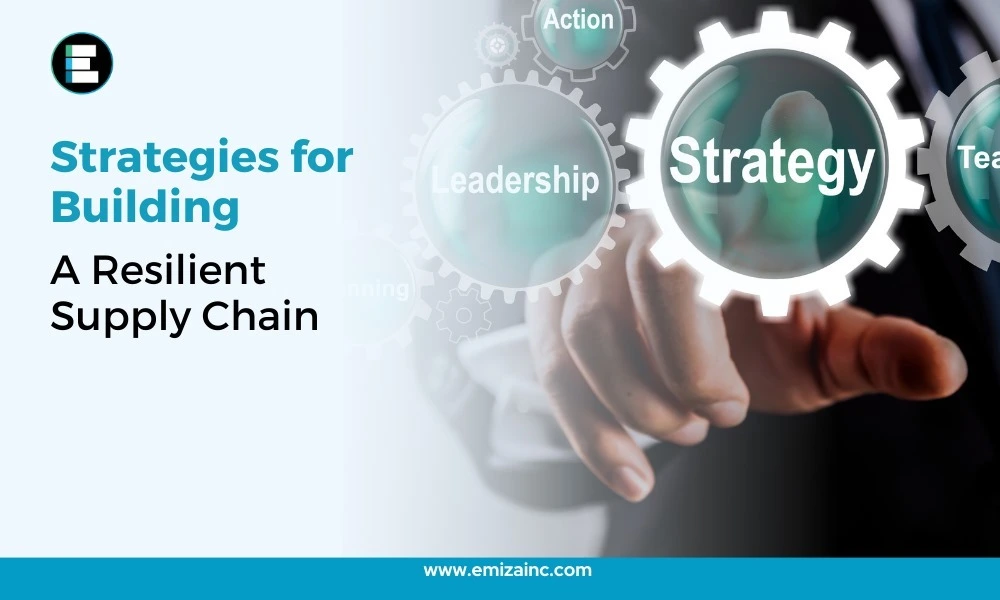Strategies for Building a Resilient Supply Chain

The disruptions caused by geopolitical tensions, and natural disasters have underscored the importance of supply chain resilience. Building a resilient supply chain is no longer a competitive advantage but a necessity for businesses to survive and thrive in an unpredictable environment. In this blog, we will explore key strategies for building a resilient supply chain, with a special emphasis on Indian case studies to illustrate these strategies in action.
Understanding Supply Chain Resilience
Supply chain resilience refers to the ability of a supply chain to anticipate, prepare for, respond to, and recover from disruptive events. A resilient supply chain is flexible, adaptable, and robust, capable of maintaining operations and meeting customer demands even in the face of challenges.
Read more : Bonded Warehouse
Key Strategies for Building a Resilient Supply Chain
1. Diversifying Supply Sources
Relying on a single supplier or region can be risky. Diversifying supply sources ensures that businesses have alternative options in case of disruptions.
2. Enhancing Visibility and Transparency
Visibility across the entire supply chain is crucial for identifying potential risks and making informed decisions. Implementing advanced technologies like IoT, blockchain, and AI can provide real-time insights into supply chain operations.
3. Building Strong Supplier Relationships
Establishing strong relationships with suppliers fosters collaboration and trust, enabling better communication and more flexible arrangements during disruptions.
4. Investing in Technology and Automation
Technology and automation play a critical role in enhancing supply chain resilience. Automated systems can improve efficiency, reduce errors, and enable faster responses to disruptions.
5. Developing a Flexible Logistics Network
A flexible logistics network can adapt to changing conditions and reroute shipments as needed. This flexibility is vital for maintaining the flow of goods during disruptions.
6. Implementing Risk Management and Contingency Planning
Identifying potential risks and developing contingency plans are essential for supply chain resilience. Businesses should conduct regular risk assessments and prepare for various disruption scenarios.
7. Embracing Sustainability
Sustainability is increasingly becoming a key aspect of supply chain resilience. Sustainable practices can reduce risks associated with resource scarcity, regulatory changes, and environmental impacts.
8. Fostering a Culture of Continuous Improvement
A culture of continuous improvement encourages innovation and adaptability. Businesses should regularly review and improve their supply chain processes to stay resilient.
Also Read : warehousing companies in India
Case Study: Marico
Marico, a leading consumer goods company, fosters a culture of continuous improvement within its supply chain operations. The company regularly reviews its processes, incorporates feedback, and implements best practices to enhance efficiency and resilience. This proactive approach has helped Marico navigate supply chain challenges and maintain a competitive edge.
Case Study: Flipkart
Flipkart, India’s leading e-commerce platform, has developed a flexible logistics network to ensure timely deliveries. The company uses a combination of its own delivery fleet and third-party logistics providers to maintain flexibility. During the pandemic, Flipkart quickly adapted its logistics operations to meet the surge in online orders, demonstrating the importance of a flexible logistics network.
Conclusion
Building a resilient supply chain is crucial for businesses to withstand disruptions and thrive in today’s volatile environment. Indian companies, through strategic initiatives and innovative approaches, are setting benchmarks in supply chain resilience. By diversifying supply sources, enhancing visibility, building strong supplier relationship businesses can create resilient supply chains capable of navigating any challenge.
Source : https://www.emizainc.com/strategies-for-building-a-resilient-supply-chain/
- Industry
- Art
- Causes
- Crafts
- Dance
- Drinks
- Film
- Fitness
- Food
- Juegos
- Gardening
- Health
- Home
- Literature
- Music
- Networking
- Other
- Party
- Religion
- Shopping
- Sports
- Theater
- Wellness
- News


